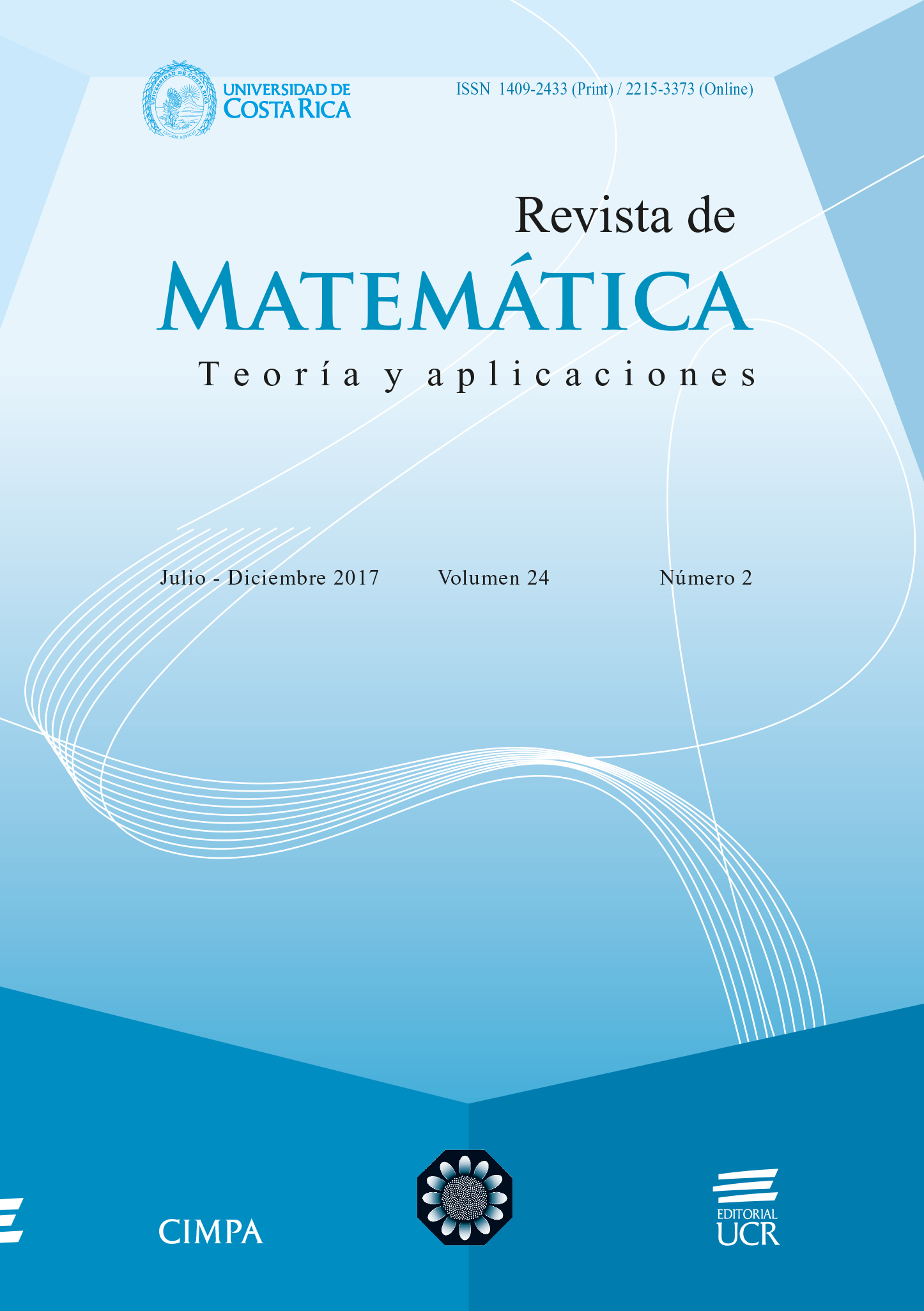Abstract
The HIV/AIDS has cost humanity countless material and human losses. Study its dynamics has become a priority for the global scientific community, with the idea of establishing an effective control policy and subsequently analyzing its eradication. This paper presents a model based on transition matrix of Markov chains with the objective to design a future strategy to reduce the appearance of new cases and decrease the lethality of this epidemic.
References
Arazoza, H. de; Lounes, R.; Pérez, J.; Hoang, T. (2003) “What percentage of the Cuban HIV-AIDS epidemic is known?”, Revista Cubana de Medicina Tropical 55(1): 30–37.
Bailey, N.T. (1975) The Mathematical Theory of Infectious Diseases and its Applications. Ch. Griffin and Company Ltd., London.
Barrios, J.; Arazoza, H. de; Marrero, A.; Baguer, M.L. (2010) “Parameters estimation in HIV/AIDS epidemiological models”, Revista de Matemática: Teoría y Aplicaciones 17(2) : 143–158.
Delgado, E.M.; Marrero, A. (2016) “Modelos matemáticos de VIH/SIDA definidos por EDOs y con estrategia de control”, sometido a Revista Ciencias Matemáticas.
Diekmann, O.; Heesterbeek, J.A.P. (2000) Mathematical Epidemiology of Infectious Diseases: Model Building, Analysis and Interpretation. Wiley, New York.
Garaluz, E.G. (2014) Modelado Matemático de Sistemas Dinámicos en Epidemiología, Tesis Docotral, Universidad de Málaga, Málaga, España.
Hsieh, Y.-H.; Arazoza, H. de; Lounes, R.; Joanes, J. (2005) “A class of methods for HIV contact tracing in Cuba: Implications for intervention and treatment”, in: W.-Y. Tan & W. Hulin (Eds.) “Deterministic and Stochastic Models for AIDS Epidemics and HIV Infection with Interventions”, Word Scientific, Singapore: 1–16.
Kopycka-Kȩdzierawski, D.T.; Billings R.J. (2006) “Application of nonhomogeneous Markov models for analysing longitudinal caries risk”, Community Dentistry and Oral Epidemiology 34(2): 123–129.
Lamptey, P.; Johnson, J.L.; Khan, M. (2006) “El desafío mundial del VIH y el SIDA”, Population Bulletin 61(1): 1–28.
Ministerio de Salud Pública. Anuario Estadístico de Salud. República de Cuba, versiones de 2010, 2011, 2012, 2013, 2014
Murray, J. (2002) Mathematical Biology, 3rd ed. Springer, New York.
Shiffman, J. (2006) “Has donor prioritization of HIV/AIDS control displaced aid for other health causes?”, Public Health and Humna Rights, PAHA 134th Annual Meeting and Exposition, November 4-8, Boston MA.
Tan, W.-Y.; Wu, H. (2005) Deterministic and Stochastic Models of AIDS Epidemics and HIV Infections with Intervention. World Scientific, Singapore.
Taylor, H.M.; Karlin, S. (1998) An Introduction to Stochastic Modeling. Academic Press, San Diego CA.
Trajstman, A.C. (2002) “A Markov chain model for Newcastle disease and its relevance to the intracerebral pathogenicity index”, Biometrical Journal 44(1): 43–57.
Tudor, C. (1994) Procesos Estocásticos. Aportaciones Matemáticas, Serie Texto 2, Sociedad Matemática Mexicana, México D.F.
Yang H.C.; Chao, A. (2005) “Modelling animal’s behavioural response by Markov chain models for capture-recapture experiments”, Biometrics 61: 1010–1017.

This work is licensed under a Creative Commons Attribution-NonCommercial-ShareAlike 4.0 International License.
Copyright (c) 2017 Revista de Matemática: Teoría y Aplicaciones
